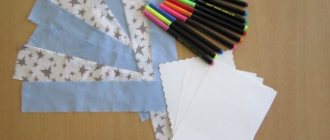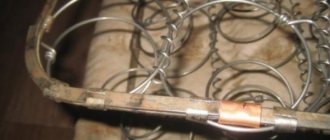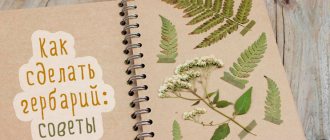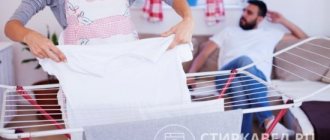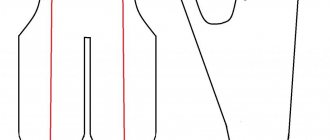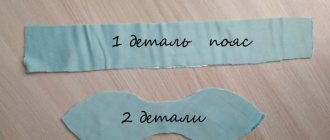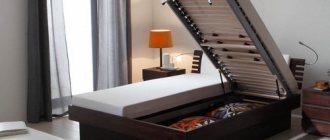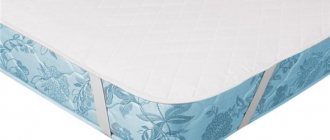To increase efficiency and overall well-being, the body needs quality rest. The most important aspect of good rest is good sleep. What will help improve your sleep quality? First of all, a comfortable sleeping place.
A comfortable mattress gives you sound sleep and good health. Therefore, you should pay special attention to your mattress.
A properly selected mattress will ensure a sound sleep. Manufacturers offer a wide selection of various materials with various fillers. Models range from budget to premium. To take into account all individual needs, you will have to shell out a large amount.
Finding a comfortable, high-quality mattress at a low price can be difficult. Sometimes it's easier to make a mattress yourself.
If the amount turns out to be too large for you, there is a way out - to make a mattress with your own hands. This solution will allow you to save money, create an ideal sleeping place for yourself, and thereby ensure healthy, sound sleep.
A mattress made by yourself can be no worse than an analogue from the manufacturer.
There are several types of mattresses that you can actually make yourself. These include:
- foam;
- orthopedic;
- from pillows.
With your own hands, you can create any mattress to your taste: either from ordinary foam rubber or from pillows.
If you have an old, worn-out mattress, just renovate it, it’s even cheaper!
An old mattress can easily be turned into a new one - you just need to properly repair it and replace the cover!
How to make a foam mattress with your own hands
Foam rubber (polyurethane foam, PPU) is perfect as a filler; it is cheap and durable. There are many types of foam rubber. They are distinguished by their quality characteristics: density, elasticity, rigidity.
The easiest way to make a mattress is from foam rubber. You can choose material of any suitable thickness.
The ideal filler is soft, elastic foam rubber, which can quickly restore its original shape after use. The quality of polyurethane foam is determined by its density. The filler must have a density in the range from 25 to 40 kg/m3. To make the frame, foam rubber with a higher density is required.
A foam mattress is the simplest and most convenient to make. In order to do it, you do not need special knowledge.
When selecting foam rubber, you must take into account the product labeling; choose a product with the designations EL (high rigidity, load up to 100 kg inclusive, low price; service life 5 years), HR or VE (have high breathability, elasticity, quite soft, service life from 10 years).
It is important to choose the right thickness and density of foam rubber for the future mattress, and also pay attention to the markings.
Before you start working, please note that for permanent mattresses you will also need spring blocks, for portable ones - only polyurethane foam.
In order to make a foam mattress with your own hands, you will need:
- glue - you will need a special one for gluing foam rubber (it is not recommended to skimp on the adhesive composition, cheap brands can be harmful to health);
- dense foam rubber is the basis of the frame, inside of which soft polyurethane foam (EL, HR or VE) is located;
- fabric for sewing a cover.
To make it, a standard set of tools is suitable: tape measure, ruler (for measurements), knife, scissors. The fastest way to make a cover is on a sewing machine, but you can get by with a thread and a needle if you don’t have one.
Prepare the necessary tools to make your own foam mattress.
To understand how to make a mattress with your own hands, use the step-by-step instructions.
- Decide on the sizes.
- Assemble the frame. Its purpose is to give the product the desired shape. Use high-density polyurethane foam (average width 7-8 cm). Cut the bars to the required size, place them on a flat surface, generously lubricate them with special glue at the joints.
- Place the filler into the finished frame (use a solid sheet of foam rubber up to 15 cm thick), after cutting out a piece of a suitable size. If you can't find thick polyurethane foam, take thin sheets (<5 cm) and glue them together.
Additional bonuses of a mattress cover
In addition to the fact that a mattress pad (topper) increases the rigidity of the mattress and saves us from buying a new mattress, thereby saving us money, it has another advantage. Namely:
- Protects the surface of the sleeping place (bed or sofa) from contamination. If the topper has a removable cover, then caring for it is easy.
- Using a topper will extend the life of your mattress or sofa.
- The mattress cover perfectly levels the surface of the sofa, making it a real bed.
- Toppers made of water-repellent fabric protect the sleeping area from getting wet, which is especially important when there is a small child in the house.
- An orthopedic mattress cover will help solve the problem of a sleeping area that is partially worn out and has lost its elasticity.
If your body weight is over 90 kg, the layer of coconut mattress cover should be thick - up to 6 cm.
We also recommend that you read the article: How to choose a heated sheet, useful tips and reviews
Interesting article about how to make a mattress softer using a mattress pad
How to make a mattress with orthopedic properties
To maintain the tone of the musculoskeletal system, an orthopedic mattress is needed. The decision to make ordinary foam rubber orthopedic will add several steps when laying the filler.
You can also make an orthopedic mattress with your own hands. This will require different layers of filler.
In the inner part of the finished frame, layers of foam rubber and other materials are placed alternately; it is better to use struttofiber or coconut coir (control the rigidity of the product; the smaller the layer, the softer), the layers must be carefully combined using an adhesive composition, spreading it over the surface.
Another way is to use spring blocks instead of foam rubber to increase strength, but this is more labor-intensive and expensive.
A more difficult option is to make your own mattress with spring blocks. It will require more time and expense.
approximate cost
The total amount for creating bedding varies between 3-7 thousand. The final price is less than the cost of purchasing a finished product.
The cost depends on many factors and the overall design. If you need a small mattress to cover the sofa while you sleep, its price will not be too high. When a person tries to create a full-fledged orthopedic mattress for a bed with his own hands, he will definitely have to prepare for serious expenses.
See alsoPurple sofa in interior design
DIY pillow mattress
The fastest, easiest and most budget-friendly way to create a sleeping place is a pillow mattress. Ideal for children's games, it is mobile, compact, can be placed on the floor, used as a chair or a comfortable bedding.
A mattress made of pillows is an excellent option for decorating a child's room. Making such mattresses is as easy as shelling pears.
Necessary materials:
- Several pillows (quantity, size chosen at your discretion);
- Linen or pillowcases;
- Scissors;
- Needles and thread (sewing machine).
It takes very little time to create a mattress from pillows. You just need to choose the right material and prepare several pillows of the same size.
Product creation is carried out in two ways:
- Place the required number of pillows in a row and measure the total length. Multiply the resulting number by 2.2 (the pillows will fit completely into the fabric). Fold the cut fabric in half and stitch (sew) the sections for the pillows. Place the pillows in the finished sections, then sew the edges (to prevent the pillows from falling out), trim off the excess fabric.
- Take the pillowcases, arrange them so that the holes are on one side, sew them together, then place them inside the pillow (if desired, the holes in the pillowcases can be sewn up).
Pillow mattresses not only fit perfectly into the interior, but are also suitable for compact storage in the closet.
Preparing fabric for stitching
The stitch can be done either manually or using a machine. The traditional option would be straight lines, which in the future will turn into small squares. If the craftswoman wants to add originality to the stitch, then you can find patterns where there are different snowflakes or flowers on the outer part of the product.
Preparing fabric for stitching begins with applying a pattern to the material. The mattress will be sewn along the stitch.
Attention! If you want to decorate the product with figures or designs, then you need to make it on paper in advance. Then, after making the pattern, the needlewoman only needs to attach the sketch to the material and simply trace it. Below is how to sew a mattress into a stroller
Below is how to sew a mattress into a stroller.
Option for girls
How to reconstruct a stationary mattress with your own hands
Over time, any thing loses its original properties and wears out. Dents appear in mattresses, springs burst, and the cover breaks.
What to do with a worn-out mattress if it’s a shame to throw it away? You can give it to specialists or repair it yourself.
You can get rid of these problems by buying a new one (which is quite expensive), or by reconstructing the old one.
Even a mattress with springs can be restored without outside help, although this task will be quite labor-intensive
You will need:
- Filler.
- Textile.
- Thread, needle.
- Scissors, knife.
- If necessary: slats, springs, twine.
- Hammer, large nails, stapler, staples.
Prepare the necessary tools for reconstructing the mattress and use the instructions.
Further actions depend on the degree of wear.
- Lightweight. After opening the upholstery, evaluate the integrity of the springs. Replace some of them, tighten the other with twine. Replace the filler (if desired, the cover).
- Labour intensive. You will need independent spring blocks of the required size. Lay the blocks vertically, paying attention to the level of the springs (should be the same). Secure the lower part to slats of the same size. Drive nails into the end side of the bed (keep to the level of the spring rows).
You will have to tinker with a spring mattress much longer. But such mattresses can also be repaired yourself.
When finished, tie the springs with strong twine. Start with a cross row, continue lengthwise and finish with a diagonal stitch. Cover the top with a thick cloth and place the desired filling on it (sintepon, foam rubber, etc.). The last stage is upholstery, secure the material with a furniture stapler.
Follow the simple instructions and you can easily repair your mattress without specialists!
Disposal options
When your bed is causing you discomfort, you should know how to dispose of your old mattress. There are several options: what to do and where to return the product. Now there are companies involved in the removal of bulky waste. With their help, recycling mattresses saves time and preserves the environment.
Take it to the trash for 2,000 rubles. Law on recycling of CGO
You can't just throw away a used mattress. Such products belong to bulky waste, and they can only be disposed of when there is a separate container for construction waste, equipment and other KGM. These bins are not located in every yard.
You can try to leave the old mattress in solid waste bins, but this is illegal. According to the rules, such attempts provide for a fine of up to 2 thousand rubles. Removal of such non-standard waste is provided by special services upon conclusion of an agreement and only on a paid basis.
The product cannot simply be thrown away
Agreement with RO on removal for an additional fee
When you don’t know how to dispose of a double bed mattress, you should contact the Regional Operator. After contacting the service, the product will be picked up by a specialized team, which will determine its future fate. Such a service will cost 300-500 rubles, and maybe more.
As a gift with pickup
If you can’t organize professional removal, you can look for people who need such an attribute. You can give it away as a gift to those who do crafts. The interior can be used for various products such as toys, furniture stuffing, etc. This method will help you get rid of your junk without the cost of transporting it.
Will be taken by people doing crafts
Transfer to human assistance centers
Bedding can be donated free of charge to citizen assistance centers and homeless shelters. By donating the product, you can help homeless people in need, those who will definitely need it. This method is suitable in cases where the good condition does not allow you to simply throw away the item.
Take it to the dacha
People are accustomed to taking out unnecessary things that have nowhere to put them at the dacha. Such objects get a second chance at life there. The mattress will help improve an existing sleeping area or build a sun lounger outside.
Can be used as a lounger
Donate to an animal shelter
An item that is severely worn and cannot be used again can be donated to an animal shelter. There it can be used as warm bedding in enclosures. If necessary, shelter staff disassemble products and remove anything from them that could harm the animals.
Sewing a cover
A mandatory attribute of any mattress is a cover. Sewing a mattress cover does not take much time, the technology is simple and straightforward.
Sewing a mattress cover with your own hands is not as difficult as it might seem at first glance. Select the appropriate material and simply follow the instructions.
Materials for work:
- Any thick fabric.
- Rubber.
- Safety pin (English).
- Measuring tape, pencil, ruler.
- Sewing machine.
Measure the length, width of the mattress, height of the side. You can draw a pattern on a piece of paper. The cover material must completely cover the top and sides. Don't forget to leave 15 cm on each side.
Carefully measure the mattress, not forgetting the required indentations and height of the mattress. This will determine how correctly the cover will sit on the mattress.
Place the fabric on the mattress, carefully folding the corners and secure with a pin. Carefully remove the fabric and machine stitch the corners. On the wrong side, fold the reserved fabric over and sew a hem seam (wide enough to thread the elastic through). Thread an elastic band into the seam. The case is ready.
Sewing a mattress cover takes a little time, but this mattress cover looks no worse than a store-bought one!
Results
To make a mattress with your own hands at home, you just need to study the relevant instructions in detail, purchase materials and create a sketch. Foam blocks are an affordable product; when purchasing, you can choose the desired size, height, hardness, and density.
After completing the process of creating a polyurethane mattress and before sending it to the bed, you need to vacuum the product. To eliminate unpleasant odors, just take it out into the fresh air and leave it there for several hours. When ventilating, avoid exposure to moisture and direct sunlight.
How to shrink a mattress at home
In some cases, the mattress may need to be altered; for example, its size may not fit the bed, or it may be too high.
When an old foam mattress is not the right size for a new bed, the easiest way to cut it is to cut it
If the product does not have springs, the task is extremely simple - cut the seams and remove unnecessary filler material. Carry out the work as carefully as possible. After removing the excess, sew the seams.
You can easily reduce the size of the mattress yourself. The main thing is to carefully sew up the product.
If springs are present, then to reduce the height you will have to remove the excess spring block.
List of required materials and tools
In order to make a mattress with your own hands, you need to prepare all the necessary materials and tools.
- Thick polyurethane foam. It is needed to make the mattress frame. The filler will be located inside this foam. This design will increase the service life of the foam mattress.
- In order to create a foam mattress, you can purchase separate pieces of filler.
- Glue is needed to connect the frame to the filler itself. Glue must be purchased for gluing foam rubber. The regular one definitely won't work here. To better apply the glue to the surface, use a special gun. Don't worry, this glue has no odors. It is absolutely harmless to your body, so you don’t have to wear a mask while working.
- It is better to choose natural and dense fabric. Linen, viscose or cotton are perfect.
Tools:
- roulette;
- scissors;
- sharp knife for cutting filler;
- sewing machine (manual or electric).
Types of structures
Most often, cotton and foam mattresses are made at home. The advantage of the first of them is the naturalness of the materials, and the main advantages of the second are that foam rubber:
- does not form into lumps during operation;
- suitable for allergy sufferers, as it does not harbor insects and parasites.
The disadvantages of this material are sensitivity to moisture, deformation (punching) during prolonged use.
Homemade mattresses come in two types:
- Springless mattress. Its optimal thickness is 10 cm. Such a product is extremely easy to manufacture: it is enough to cut out the previously prepared material, process its edges, cover it with fabric, and put on a cover.
- Mattress with springs. This design is similar to a factory orthopedic mattress. The most beneficial for health are spring bases with independent springs, but if such a design cannot be found, you can use a standard spring block. The manufacturing process consists of two stages. On the first of them, a box is assembled, acting as a base, and on the second, a filler is placed in the box. For the top and bottom parts of the box, foam rubber with a thickness of at least 5 cm is used, and for the side edges, material with a thickness of 3 cm is suitable.
When making any of these designs, the craftsman will need thick fabric for covering and strong threads.
Before you throw away your tools...
It is important to have an understanding of mattress sizes and types, foam types and the all-important sleeping position before doing anything. This will help you save time, money and effort.
Standard mattress sizes
- One - 30 x 75
- Twin - 38 x 75
- Double XL – 38 x 80
- In full - 54 x 75
- Queen - 60 x 80
- king - 76 x 80
- King of California - 72 x 84
Types of mattresses
- Innerspring mattresses are also known as the traditional mattress that most of us are familiar with. Springs use a coil system as the basic support structure.
- All foam mattresses are exactly that: all foam. They come in different types such as memory foam and latex or foam blends.
- Hybrid mattresses - A more modern take on innersprings, hybrid mattresses also use a coil system as a support structure, but also use foam as a comfort and base layer.
Foam Types
- Memory Foam - Developed by NASA for use on the space shuttle, they released the design for public use in the '80s, much to the delight of mattress manufacturers. Memory foam is more elastic than regular foam and easily molds to the shape of the human body. Manufacturers have also added their own little tweaks to memory foam and come up with open-cell foam (to make it more breathable) and gel memory foam (to make it cooler).
- Latex Foam - Those who are more environmentally friendly usually choose a more natural mattress and latex mattresses are usually made from natural rubber tree latex (Talalay and Dunlop latex). Some latex mattresses may be made from synthetic latex or a mixture of synthetic and natural latex.
Sleeping position and firmness levels
- Side sleepers are for those who sleep strictly on their sides. Side sleepers will benefit most from sleeping on a soft to medium soft mattress. This relieves pressure on the shoulders and hips.
- Rear sleepers are for those who sleep strictly on their back. Back sleepers will benefit more from sleeping on a medium to firm mattress. This helps control the alignment of the spine.
- Stomach sleepers are for those who sleep strictly on their tummy. Stomach sleepers will sleep best on a medium to medium firm mattress. This helps support your hips while keeping your spine straight.
- Combination sleepers are sleepers that switch between different sleep positions. They will benefit more from a medium to medium soft mattress as it provides maximum support for combination sleepers.
More information about mattress fabric
The cover for the product is also an important aspect, the choice of which requires careful consideration.
All materials are divided into knitwear and jacquard. Durable and wear-resistant materials are considered to be varieties with the addition of spunbond or synthetic padding with quilting. Knitwear is distinguished by its structure and is made by connecting loops together, which makes it possible to enjoy its additional characteristics:
- The knitwear stretches well, which ensures a tight fit to the product;
- Has elasticity;
- Soft and pleasant to the touch.
Among the positive qualities, we can note the ease of care of a cover made of this material; in addition, it is quite durable and wear-resistant.
Jacquard is distinguished by its complex weaving. It has no lint, which ensures the mattress cover is perfectly smooth. A mixture of materials is used to produce fabric, which allows achieving a high level of density and relief. It is good to choose jacquard, which contains a large percentage of cotton. Jacquard is pleasant to the touch and is distinguished by its safety.

